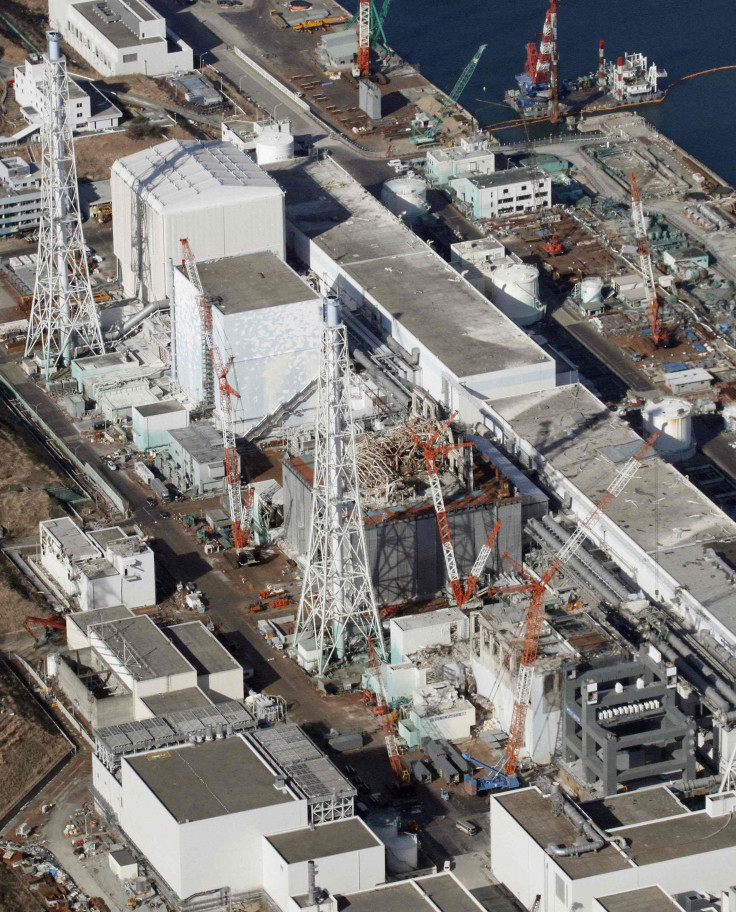Fukushima Nuclear Power Plant Steams, As Photos Of Deformed Vegetables Circulate On The Web [PHOTOS]

After finding steam emanating from the reactor building of the Fukushima Daiichi nuclear power plant, Tokyo Electric Power Company, the operator of the plant, prepared to prevent sustained nuclear reactions within its most heavily damaged reactors, The New York Times reports. Officials stressed that nuclear reactions were only a remote possibility.
Oddly, just four days ago, 22 photographs of deformed vegetables and other difficult to identify plants — including tomatoes with tumors, horrifyingly large cabbage, and conjoined corn cobs and peaches — appeared on the website Imgur with the title "Effects from the Fukushima radiation disaster?" Imgur is a site used to share photos and is host to "the most viral images of today, sorted by popularity." Although no information accompanies the images on Imgur, the title alone allows one to speculate that the deformed plant life are a result of the March 2011 Fukushima nuclear power plant meltdown.
2011
Approximately 18,500 people died due to the earthquake and tsunami in Japan on March 11, 2011, and more than 100,000 people abandoned their homes after the subsequent meltdowns at Fukushima Daiichi. It is considered the world's worst nuclear crisis since the Chernobyl disaster in 1986 while also being only the second to measure level seven, the highest (or worst, a 'major incident'), on the International Nuclear Event Scale. There were no deaths caused by radiation exposure at that time.
Originally designed by General Electric and maintained by the Tokyo Electric Power Company (TEPCO), the plant consists of six separate boiling water reactors. At the time of the earthquake, four of the reactors had been defueled or shut down. Immediately after the earthquake, the remaining three reactors automatically shut down while emergency generators kicked in. However, the tsunami flooded the rooms in which the emergency generators were housed, and the resulting power failures overwhelmed the cooling systems, whereupon the reactors suffered not one but multiple meltdowns.
Five months after the disaster, cesium 137 and 134 were detected in more than a dozen bluefin tuna caught near San Diego. The levels were 10 times higher than tuna found in previous years. In February, the World Health Organization released a report stating that "for the general population inside and outside of Japan, the predicted risks are low and no observable increases in cancer rates above baseline rates are anticipated."
Today
While many areas near the plant are beginning to be repopulated, continued mishaps at the plant overshadow the return of residents. A recent jump in levels of radioactive cesium and tritium in the groundwater, along with suggestions that the groundwater is leaking into the Pacific Ocean, have raised alarms over the continued environmental threat posed by the coastal plant, The New York Times reports.
And now within the past day, remote camera footage showed steam escaping from the top of a damaged reactor's primary containment structure, which houses its fuel vessel, according to TEPCO. A worker who inspected the footage noticed the steam, said Hiroki Kawamata, a spokesman.
TEPCO officials are unsure what caused the steam; they hypothesize that rainwater seeping into the containment vessel may have turned to vapor because of high temperatures there. The elevated levels of radiation make it too dangerous for workers to approach the reactor building. Remotely operated cranes are used on the site.
Meanwhile, The Butterflies And Plants
Just last week, biologists studying Fukushima and Chernobyl came together at the annual conference for the Society for Molecular Biology and Evolution in Chicago to report on what they had learned so far. Joji Otaki, an ecologist at the University of the Ryukyus, has studied the wing-spot patterns and other traits in a Japanese species, Zizeeria maha, for more than a decade. "I never dreamed of using it for a nuclear accident," said Otaki to Nature. After the Fukushima meltdown, though, his students convinced him to examine the butterflies for abnormalities as an environmental indicator of radiation's effects.
Arriving in Fukushima just two months after the earthquake (when the butterflies emerge from their chrysalises) and then again in September 2011, Otaki's team collected butterflies near the reactor. Insects collected in May showed few problems, but their lab-reared progeny had abnormalities, such as misshapen wings and aberrant eyespots. In addition, many died as pupae. Among the September-collected butterflies, more than half of the offspring showed such defects.
Otaki's team also exposed the laboratory butterflies to radiation doses akin to those that butterflies near Fukushima might have received. The offspring developed the same problems. "You can come up with alternative explanations, but I think the hypothesis that radiation caused death and abnormalities is the most reasonable," Otaki, who presented his work at the Chicago meeting, told Nature.
Other scientists suggest caution. "We have seen some evidence of increased mutation rates in plants and barn swallows in Fukushima, but we have not had the funding to do the sort if rigorous science that is necessary to examine such questions in a convincing manner," Timothy Mousseau, a biology professor at the University of South Carolina who is currently studying fauna in Fukushima, told ABCNews.com. "The vegetable photos are suggestive but, at present, are only anecdotal. Follow-up studies need to be conducted by qualified researchers to verify the validity of these observations."
Source: Madigan DJ, Baumann Z, Fisher NS. Pacific bluefin tuna transport Fukushima-derived radionuclides from Japan to California. PNAS. 2012.
Published by Medicaldaily.com



























